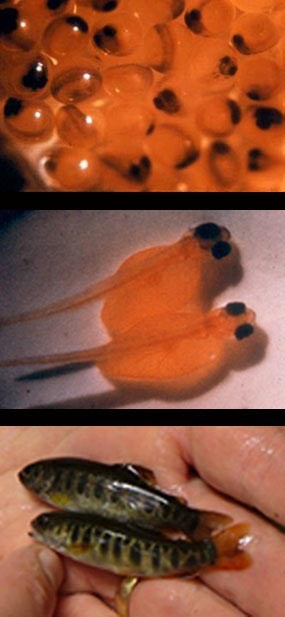
You’re Right! Female brook trout produce around 80-200 eggs each breeding year within the park. Less than 10% of these eggs will make it to the one year age class. Brook trout spawning occurs in the fall. Spawning is brought about in response to the change in daylight and the decreasing of water temperature. These factors cause trout to experience hormonal changes that start their spawning activity. Males become brighter in color and their teeth become larger. Females begin to search out the appropriate area for a nest (redd) and start construction. A redd is a nest area cut into the gravel and freed of detritus and organic matter by the female for the deposition of eggs and milt (sperm) in hopes of fertilization. A female crouches over her redd and signals to the male who then crouches along beside her. Milt and eggs are released simultaneously and then the female covers the redd with gravel. The eggs, if fertilized, will incubate here over a period of time. Hatching time depends on water temperature. The success rate of brook trout embryos is highly dependent on the quality of environment in which the redd is built. Sedimentation, floods, droughts, extremely cold temperatures, and other variables can cause tremendous loss in their reproductive success. The embryos must have a permeable redd for water circulation, thus any siltation within a site can increase the loss of embryos. Extreme cold can cause anchor ice (ice formed at the bottom of a stream) and reduce egg success. Floods can wash away redds. Droughts can dry up redds and increase stream sedimentation. Healthy, well managed watersheds are essential to having good spawning and incubation areas for brook trout. |
Last updated: April 14, 2015
